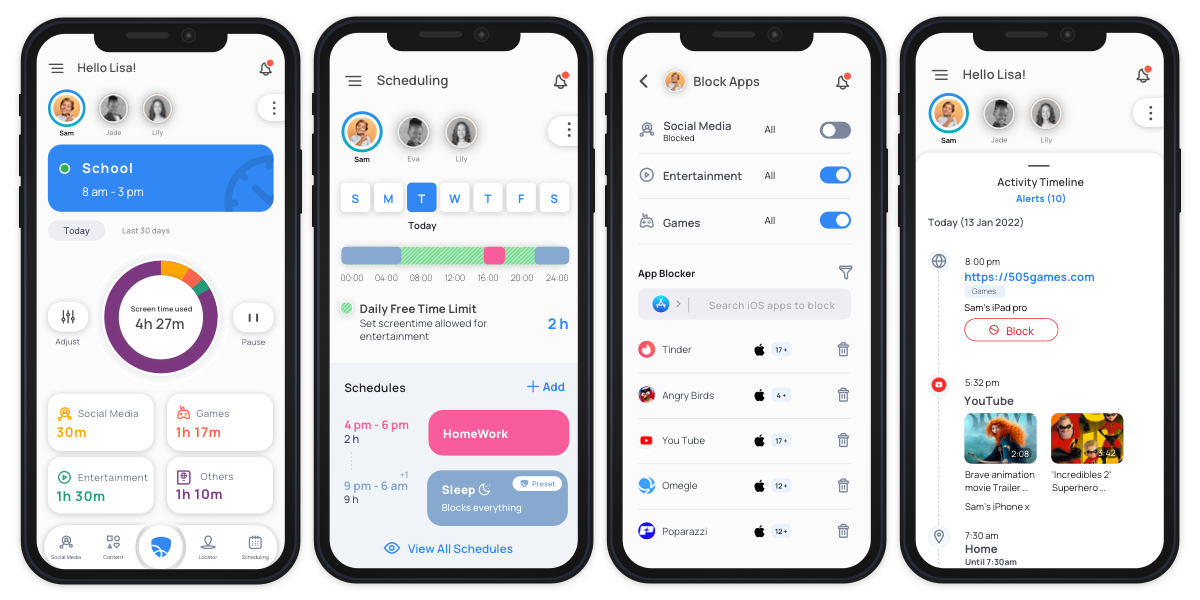
Google Spies on You Online & Real World
Google spies on you online and in the real world, collecting an astonishing amount of data about your life. From your browsing history and app usage to your physical location and interactions with retailers, Google’s reach extends far beyond the digital realm. This in-depth look reveals the extent of this surveillance, examining the methods, concerns, and potential solutions.
This article explores the various ways Google collects data, from the seemingly innocuous cookies to sophisticated tracking technologies. We’ll delve into the public’s concerns, analyze Google’s privacy policies, and consider alternative solutions to safeguard user privacy. The potential impact on individuals and society is also scrutinized.
Understanding the Scope of Surveillance
Google’s vast online presence extends far beyond search results and email. Its services, from search and maps to advertising and cloud storage, collect a wealth of data about users, both online and in the physical world. Understanding the extent of this collection is crucial for informed digital citizenship and privacy awareness.The digital footprint we leave behind is meticulously tracked and cataloged, often with little awareness of the comprehensive nature of this surveillance.
This includes not just what we explicitly input but also the patterns of our online behavior, which Google’s algorithms transform into a profile of our preferences, habits, and even our emotional states.
Data Collection Methods Online
Google collects data through various means across its numerous services. Browsing history, search queries, and the use of apps like Google Maps and Gmail contribute to a detailed picture of user activity. Furthermore, Google’s personalized advertising platform relies heavily on this information, tailoring advertisements to individual preferences and interests. This constant tracking extends to interactions within other Google services, creating a comprehensive data profile of user activity.
Data Collection in the Physical World
Google’s reach extends beyond the digital realm. Location data from connected devices, often smartphones, plays a crucial role in services like Google Maps, providing real-time location information. Partnerships with retailers and businesses allow for the tracking of physical locations, potentially correlating online and offline activity. This data collection method can be used for various purposes, including targeted advertising and location-based services.
Potential Breadth of Information Gathered
The potential breadth of information collected is significant. Google has the capability to combine data from various sources, creating a comprehensive profile of an individual’s activities and preferences. This includes details about online searches, app usage, location history, and interactions with Google services across different devices. Such interconnected data can reveal insights into user routines, social circles, and even health and financial patterns.
Types of Data Collected Across Services
Google collects diverse data types across various services. The information gathered differs based on the specific service used. The following table illustrates the types of data collected by Google in different services.
| Service | Types of Data Collected |
|---|---|
| Search | Search queries, search history, location data (when enabled), user preferences, clicked results |
| Maps | Location data, navigation history, points of interest visited, search queries related to locations |
| Gmail | Email content, recipients, attachments, sent/received times, search queries within Gmail |
| YouTube | Video viewing history, search queries, comments, liked/disliked videos, interaction with channels |
| Google Play | App usage, in-app purchases, user ratings, reviews, and feedback |
Methods of Data Collection
Google’s vast data collection practices are a complex interplay of various technologies, aiming to personalize user experiences and generate revenue. Understanding these methods is crucial for comprehending the scope of Google’s influence and the potential impact on individual privacy. This exploration delves into the specifics of how Google gathers information, comparing their techniques to those employed by other companies and highlighting potential security risks.Google leverages a multifaceted approach to collect data, ranging from seemingly innocuous elements like website cookies to sophisticated algorithms and user interface designs.
This data, once compiled, is often combined and analyzed to create comprehensive profiles of individual users.
Cookies and Tracking Technologies
Cookies, small text files stored on a user’s computer, are fundamental to Google’s tracking mechanisms. They allow Google to identify returning visitors, personalize advertisements, and monitor browsing activity across different websites. Google utilizes various cookie types, including persistent cookies, which remain on a user’s device even after the browser is closed, and session cookies, which are temporary and expire when the browser is closed.
Application Programming Interfaces (APIs)
Google utilizes APIs to access and collect data from various sources. These APIs enable third-party applications and websites to integrate with Google services, providing access to user information. This often involves user authorization and data permissions, though the extent of information sharing can be complex and often opaque. For example, a third-party app may use a Google API to retrieve user profile information, location data, or even search history.
Ever wondered if Google’s got its digital nose stuck in your business, both online and offline? Well, concerns about data collection are valid. This raises important questions about privacy, and while it’s a huge topic, recent news about vulnerabilities in Azure Cosmos DB, a Microsoft database service, Azure Cosmos DB Vulnerability Details highlights just how interconnected and potentially insecure our digital infrastructure can be.
It makes you think twice about how much data companies are collecting and storing, and, in turn, raises questions about Google’s own data practices and how they might be used.
User Interface Design
Google’s user interface design, while seemingly straightforward, plays a role in data collection. Features like autofill, search suggestions, and personalized recommendations all contribute to the accumulation of user preferences and activity. This data, when coupled with other methods, paints a comprehensive picture of the user’s interests and behavior.
Cross-Device Tracking
Google employs cross-device tracking to connect user activity across multiple devices, such as smartphones, laptops, and tablets. This enables Google to build a more detailed profile of user behavior, often linking searches, purchases, and browsing habits across various platforms. For example, a user searching for a specific product on their phone might see advertisements for that product on their tablet or laptop, a direct result of cross-device tracking.
Predictive Modeling
Sophisticated algorithms and machine learning models, often referred to as predictive modeling, are used to forecast user behavior and preferences. This allows Google to anticipate user needs and tailor content and advertising accordingly. For instance, a user frequently searching for information about a particular topic might see more content related to that topic in the future, a consequence of predictive modeling.
Comparison with Other Companies
While other companies like Facebook and Amazon also utilize similar data collection techniques, Google’s scale and reach are often unmatched. The vast network of Google products, including Search, Gmail, Maps, and YouTube, contributes to a comprehensive data ecosystem. The extent to which other companies integrate these various methods, however, may vary.
Security Risks
The extensive data collection methods employed by Google, while providing personalized experiences, raise significant security risks. The potential for data breaches, misuse of information, and privacy violations are ever-present concerns. Misconfigurations of APIs, vulnerabilities in software, or malicious actors could compromise sensitive user data.
Table: Data Collection Methods Across Google Products
| Google Product | Primary Data Collection Methods | Potential Security Risks |
|---|---|---|
| Google Search | Cookies, APIs (for third-party integrations), User Interface design (search suggestions), Predictive Modeling (personalized search results) | Data breaches, misuse of search history, personalized tracking |
| Gmail | Cookies, APIs (for third-party integrations), User Interface design (spam filters), Predictive Modeling (personalized recommendations) | Data breaches, unauthorized access to emails, misuse of email data |
| Google Maps | Cookies, Location data (GPS), APIs (for third-party integrations), Predictive Modeling (traffic predictions) | Data breaches, unauthorized location tracking, misuse of location data |
| YouTube | Cookies, User Interface design (recommendations), APIs (for third-party integrations), Predictive Modeling (personalized recommendations) | Data breaches, misuse of viewing history, personalized tracking |
Public Perception and Concerns

Google’s vast data collection practices have sparked significant public concern and debate. Users are increasingly questioning the extent of their personal information’s use and the potential implications for their privacy. This apprehension is driven by a complex interplay of factors, including the perceived scope of surveillance, the methods used, and the lack of transparency in data handling. This exploration delves into the public’s anxieties, the controversies surrounding Google’s practices, and the impact on user trust.The public’s reaction to Google’s perceived surveillance is multifaceted.
While some users are comfortable with the convenience and functionality that data collection enables, others are deeply concerned about the potential for misuse, manipulation, and the erosion of individual privacy. These anxieties are often fueled by a lack of clear communication from Google regarding its data collection policies. Concerns about potential misuse and the lack of control over personal data are frequently voiced online and in public forums.
Common Concerns Expressed by Users
Users frequently express concerns about the extent of Google’s data collection. These concerns range from the seemingly innocuous collection of browsing history and location data to the more sensitive gathering of personal preferences, communications, and even financial information. Data collection practices often feel invasive and lacking in transparency. A key concern is the lack of control users have over their data and how it’s used.
Public Reaction to Perceived Surveillance
The public’s response to Google’s data collection practices is a mix of acceptance and apprehension. A significant portion of the public is aware of Google’s role in providing essential services, including search, email, and maps, and accept data collection as an inherent part of this service. However, a substantial segment is deeply concerned about the breadth and depth of the data collected and the potential misuse of this information.
Google’s constant monitoring of our online activity is well-documented, but what about their real-world surveillance? While the Department of Justice Offers Safe Harbor for MA Transactions ( Department of Justice Offers Safe Harbor for MA Transactions ) might seem unrelated, it highlights a larger trend of data collection and potential privacy violations. This raises serious questions about the extent of Google’s influence on our lives, both virtually and physically.
The perception of potential misuse varies, with some fearing manipulation, others worried about privacy violations, and others concerned about potential discrimination based on collected data.
Examples of Public Debates and Controversies
Numerous public debates and controversies have emerged surrounding Google’s data collection practices. These controversies often revolve around specific instances of perceived privacy violations, such as the use of location data for targeted advertising, or the handling of user data in relation to government requests. One prominent example is the debate surrounding Google’s use of user data for personalized search results, which has been criticized for potentially reinforcing existing biases.
The debate about the extent of Google’s influence on search results and the impact on the spread of misinformation remains a significant point of contention.
Relationship Between Data Privacy and User Trust
The relationship between data privacy and user trust is crucial. As the public becomes more aware of data collection practices, user trust in companies like Google is influenced by how they handle user data. A company’s commitment to data privacy and transparency directly impacts user trust and loyalty. A lack of transparency and clear data policies erodes this trust, which can lead to a decline in user engagement and a preference for alternative services.
Trust in a company is directly correlated with its handling of sensitive user data.
Evolution of Public Opinion on Google’s Data Collection
| Year | Public Opinion | Driving Factors |
|---|---|---|
| 2000-2010 | Generally accepting of data collection, focused on convenience and service | Early adoption of online services, limited awareness of data collection scope |
| 2010-2020 | Increasingly concerned about data privacy, awareness of targeted advertising and data breaches | Rise of social media, heightened awareness of privacy issues, significant data breaches at other companies |
| 2020-Present | Growing demand for data transparency and control, awareness of potential for misuse and manipulation | Increased data breaches, growing concerns about AI and machine learning applications, greater understanding of algorithms |
Privacy Policies and Regulations
Google’s vast reach extends beyond search, encompassing numerous services that collect and utilize user data. Understanding their privacy policies and the regulations governing their practices is crucial for informed user choices. This section delves into Google’s stated commitments, the legal landscape surrounding data privacy, and how Google’s policies compare to those of its competitors.Google’s privacy policies, accessible on their website, detail how they collect, use, and share user data.
These policies often include extensive descriptions of data categories, purposes of collection, and user rights, such as access, correction, and deletion of personal information. The terms of service often accompany these policies, outlining the legal agreements governing user access and usage of Google’s services. Understanding these policies is key to comprehending the potential implications of using Google’s products.
Google’s Privacy Policies and Terms of Service
Google’s privacy policies are comprehensive documents that address the broad scope of data collection across their services. These policies typically Artikel the types of data collected (e.g., browsing history, location data, search queries), how this data is used (e.g., personalized advertising, service improvement), and the measures Google takes to protect user information. The terms of service complement these policies by specifying the legal agreement between Google and the user, outlining acceptable use, limitations of liability, and dispute resolution mechanisms.
These policies are crucial for users to understand their rights and responsibilities when using Google services.
Legal Frameworks and Regulations
Various legal frameworks and regulations globally impact how companies like Google handle user data. Data protection laws, such as the General Data Protection Regulation (GDPR) in Europe and the California Consumer Privacy Act (CCPA) in the US, mandate specific obligations for companies handling personal data. These regulations often focus on user rights (e.g., right to access, rectify, or delete personal data), transparency requirements (e.g., clear information about data collection practices), and accountability mechanisms (e.g., designated data protection officers).
These legal frameworks impose substantial requirements on companies handling user data, ensuring that users’ rights are protected.
Google’s tracking, both online and in the physical world, is a pretty unsettling thought. It raises serious questions about privacy and control. To combat this, we need to seriously consider implementing robust safeguards, like those outlined in Deploying AI Code Safety Goggles Needed. These safeguards, while focusing on AI code, ultimately provide a helpful framework for thinking about how to limit the reach of data collection, and by extension, the reach of entities like Google.
The more we can understand and control the code behind these systems, the more we can protect ourselves from the insidious effects of constant surveillance.
Comparison of Google’s Privacy Policies with Competitors
Comparing Google’s privacy policies with those of its competitors, such as Apple, Facebook, and Amazon, reveals variations in approach and emphasis. Each company employs unique strategies for data collection, usage, and user control, reflecting their individual business models and priorities. While all companies strive to comply with relevant regulations, the specific details of their policies and the degree of user control offered may differ.
Table Comparing Privacy Policies
The table below provides a concise comparison of privacy policies across major tech companies. It highlights key aspects, including data collection practices, user control mechanisms, and transparency initiatives. Note that this table represents a simplified overview and specific details can vary significantly.
| Company | Data Collection | User Control | Transparency |
|---|---|---|---|
| Extensive, encompassing various services | User-control features (e.g., account settings) | Generally comprehensive policies | |
| Apple | Focus on user data privacy | Strong user control over data | Clear and concise privacy policies |
| Highly focused on user data collection | User control mechanisms, but limited in some cases | Privacy policies often require careful review | |
| Amazon | Data collection across multiple services | User control tools | Comprehensive privacy policies, but specific details vary |
Alternatives and Solutions

The pervasive nature of Google’s services, while convenient, raises significant concerns about user privacy. Fortunately, alternatives exist that prioritize user data protection. These options, coupled with privacy-preserving technologies and user empowerment, offer a pathway to a more private digital experience.
Potential Alternatives to Google Services
A growing ecosystem of privacy-focused services is emerging, offering alternatives to Google’s suite of products. These include encrypted messaging apps, private search engines, and secure email providers. For instance, ProtonMail provides end-to-end encrypted email, ensuring the confidentiality of communications. Signal is a popular encrypted messaging app, prioritizing user privacy by using strong encryption protocols.
Privacy-Preserving Technologies
Privacy-preserving technologies play a crucial role in mitigating the risks associated with data collection. These technologies employ various methods to protect user data without compromising functionality. Federated learning, for example, allows machine learning models to train on decentralized datasets without sharing individual data points. Differential privacy adds carefully controlled noise to data, making it harder to identify individual contributions while still allowing for useful analysis.
User Control over Data, Google spies on you online and in the real world
Empowering users with control over their data is paramount in a privacy-conscious digital world. This control extends to the ability to delete personal information, restrict access, and understand how their data is used. Transparency in data handling practices is vital, ensuring users are aware of how their data is collected, used, and shared. Users should have the ability to access, modify, and delete their data as they see fit.
Tools and Techniques for Privacy Protection
Numerous tools and techniques exist to enhance user privacy. Using strong, unique passwords, enabling two-factor authentication, and regularly reviewing privacy settings on various platforms are essential steps. VPN services encrypt internet traffic, shielding online activity from prying eyes. Employing privacy-focused browsers, such as Brave, can help reduce tracking by third-party websites. Moreover, utilizing data minimization strategies, such as only sharing necessary data, can contribute to protecting user privacy.
Comparison of Privacy-Focused Alternatives
| Feature | ProtonMail | Signal | Brave Browser | DuckDuckGo |
|---|---|---|---|---|
| Encryption | End-to-End | End-to-End | HTTPS support | No tracking |
| Data Collection | Minimal | Minimal | Reduced tracking | Minimal |
| User Control | High | High | High | High |
| Ease of Use | Good | Good | Good | Good |
Note: This table provides a simplified comparison. Specific privacy features may vary depending on the specific implementation and version of each service.
Impact on Individuals and Society
Google’s pervasive data collection practices, encompassing online and offline activities, have significant implications for individuals and society. The potential for misuse and abuse of this data raises concerns about freedom, privacy, and democratic processes. This analysis delves into the multifaceted impacts, examining the effects on individual freedoms, societal implications, and the potential erosion of democratic principles. The user experience is also examined in light of this extensive data collection.The scale of Google’s data collection efforts is unparalleled, touching nearly every aspect of modern life.
From online searches and browsing history to location data and interactions with other Google services, vast quantities of personal information are constantly being gathered and analyzed. This raises serious questions about the ethical and societal implications of such extensive surveillance.
Potential Impacts on Individual Freedoms
Google’s data collection practices can potentially infringe on individual freedoms by creating a sense of constant surveillance and monitoring. The ability to track and analyze individuals’ behavior can lead to a chilling effect on free speech and expression, as individuals may be hesitant to express dissenting opinions or engage in critical discussions for fear of reprisal or targeted advertising.
This can stifle intellectual discourse and limit the range of ideas considered within society.
Societal Implications of Data Collection
The accumulation of vast amounts of personal data raises significant societal implications. Data can be used to create detailed profiles of individuals, potentially leading to discrimination in various aspects of life, including employment, housing, and access to services. Such profiling can also reinforce existing societal biases and inequalities. The potential for misuse and manipulation of this data by individuals or groups is a serious concern.
Potential Effects on Democratic Processes
The extensive data collection practices of Google and other tech companies could potentially influence democratic processes. Targeted advertising and personalized news feeds can create filter bubbles, limiting exposure to diverse perspectives and ideas. This could potentially lead to a decline in informed public discourse and an increase in polarization. Furthermore, the ability to track and analyze voter behavior raises concerns about the integrity of elections and the potential for manipulation.
Impact on User Experience
The pervasiveness of Google’s data collection can negatively impact user experience. While personalized results and recommendations might seem beneficial at first, the continuous tracking and analysis of user behavior can lead to a feeling of being constantly monitored. This can erode trust and create a sense of unease. Users may feel less comfortable sharing their opinions or engaging in open discussions.
The constant bombardment of targeted advertisements can also detract from the user experience.
Societal Implications of Google’s Data Collection Practices
| Aspect | Potential Societal Implications |
|---|---|
| Freedom of Expression | Individuals may self-censor to avoid negative consequences of their online activities. |
| Equality and Fairness | Data-driven profiling can exacerbate existing societal inequalities. |
| Democratic Processes | Filter bubbles and targeted information can lead to political polarization and less informed public discourse. |
| Economic Opportunities | Data-driven targeting can lead to increased inequality in access to opportunities. |
| Privacy and Security | The potential for misuse and breaches of collected data is a constant threat. |
Last Recap

Google’s vast data collection network raises significant questions about privacy and control. While the company argues that this data is used to improve services, the breadth and depth of information gathered raise concerns about potential misuse and the erosion of individual freedoms. Ultimately, the future of online privacy rests on a delicate balance between innovation and user control.
FAQ Guide: Google Spies On You Online And In The Real World
What are some examples of how Google collects location data?
Google collects location data through GPS on your phone, location services enabled in apps, and even your web browsing history. They also partner with retailers to track your physical movements. This data is often used for location-based services and targeted advertising.
How do Google’s privacy policies address user concerns?
Google’s privacy policies Artikel how they collect, use, and share data. They often emphasize user control over their data through settings and preferences. However, the breadth of data collected and the potential for misuse remain points of contention for many users.
Are there any alternatives to Google services that prioritize user privacy?
Yes, there are privacy-focused alternatives to Google services, such as DuckDuckGo for search, Signal for messaging, and ProtonMail for email. These services often prioritize user privacy and data security by employing different methods and standards than Google.
What are some ways users can protect their privacy from Google?
Users can protect their privacy by adjusting their privacy settings in Google services, using privacy-enhancing tools like VPNs, and being mindful of the apps and websites they interact with. It’s crucial to understand how different services collect and use data to make informed choices.





